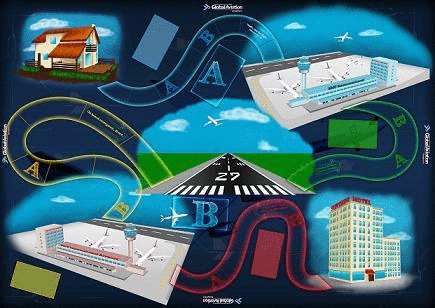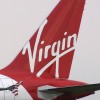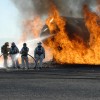Business: Airline Alliances
TOPIC: AIRLINE ALLIANCES AND A CHANGED PASSENGER EXPERIENCE
LEVEL: easy
Read the introductory text below. Follow links to additional material.
Passenger experience as a concept has been a matter of great transformation over the last years. Both, airlines and airports have invested time and expertise into revamping interiors and procedures, introducing new technologies, going green, offering bonuses and frequent flier miles club memberships, forming alliances and expanding them, as well as reinventing the entire idea of aviation security in a way that is unnerving for many a traveler or human rights activist Read
 Among all of these factors that certainly contribute to the overall travel experience, airline alliances, frequent flier mile programs and security innovations seem to stand out as the most crucial ones. Although the first two are connected and work together to create a more seamless passenger experience, the latter is more of a nightmare to the already disgruntled passenger stressed out by the recent economic downturn, the volcano’s impact on air travel and the recent ideas of charging extra for bathroom use Click to read
Among all of these factors that certainly contribute to the overall travel experience, airline alliances, frequent flier mile programs and security innovations seem to stand out as the most crucial ones. Although the first two are connected and work together to create a more seamless passenger experience, the latter is more of a nightmare to the already disgruntled passenger stressed out by the recent economic downturn, the volcano’s impact on air travel and the recent ideas of charging extra for bathroom use Click to read
Richard Quest, CNN’s Business Traveler reporter, is exploring all of these phenomena in order to try and understand the changes in passenger experience made possible by cutting-edge technology and tough business decisions.
1. Watch the video
and determine whether the following statements are true or false:
Part I: Security Experience
- A terrorist attack scare on board Northwest caused U.S. airports to implement much tougher security measures (Answer: T)
- The new rules mean more security, but promise no delays to passengers (Answer: F)
- The full body scanners were supposed to be an alternative to the full-body frisk, but are now becoming an essential part of airport security control measures (Answer: T)
- Surprisingly Manchester was the first airport to trial full body scanners and Heathrow came second (Answer: F)
- Despite very strong concerns for privacy, all British airports will soon have full-body scanners (Answer: T)
2. Match words in the right and left columns to make meaningful combinations:
1. full-body
2. localized
3. full
4. suspect
5. virtual
- areas
- strip search
- frisk
- pat-down
- search
Answers: 1 c, 2 e, 3d, 4a, 5b
3. Finding words in context:
1) What would you call a full search of a person’s outer clothing by running hands along the outer garments: a) a full body frisk, b) a full patdown, c) a full body scan, d) (a) and (b) are correct (Answer: 1d)
2) If something becomes so important and essential that it completes something, you can say it’s: a) an integral part of smth, b) it’s elite, c)it’s intrusive (Answer: 2a)
3) If you can’t see any details, but only see a shape of something, you can say you see its: a) shade, b) outline, c) form (Answer: b)
4) During a “virtual strip–search” security staff look for suspicious objects in areas that are now called : a) weird areas, b) dangerous areas, c) suspect areas (Answer: 4c)
5) A lot of passengers have very strong concerns over privacy, because they feel that full body scans are invading their space, or are: a) personal, b) localized, c) intrusive (Answer: 5c)
4. Using active vocabulary in context:
- I used to feel uncomfortable, fearing that airport security would do a localized………………………………..(answer: search), but with the introduction of full …………….. ………………………..(answer: full body scans) I just feel violated!
- It is the staff’s responsibility to identify suspect………………….. (answer: areas) and conduct a full-…………….. …………..(answer: full pat down, or full body frisk) if necessary.
- Airports all over the world are………………. ……………… (answer: rolling out) full body scans, but amidst privacy concerns, some European airports have purchased a different type of scanners that just show an………………………. Of the body (answer: outline)
- Heathrow was the first airport in Britain to ………………… (answer: trial, or roll out) full body scans.
- Security control has turned passenger experience into a virtual………………………. (answer: strip search)
Part II: Alliances and Frequent Flier Miles
1. Watch Richard Quest explain airline alliances and answer the following questions:
1) Who invented the air mile? (Answer: Tom Plaskett of American Airlines)
2) How did he come up with the idea? (Answer: he based the idea on stamps and coupons that you could trade for services and goods)
3) How many airline alliances are there at the moment and what are they called? (Answer: 3 – Star Alliance, OneWorld and SkyTeam)
4) Which of the alliances is “the original one”? (Answer: Star Alliance)
5) How did some airlines manage to take air miles a step further? (Answer: they allow their passengers to cash in miles for upgrades and hotel stays)
6) How are OneWorld taking JAL’s possible shift to SkyTeam? (Answer: they think JAL should stay where they are and they are hoping they can keep them)
7) If JAL does “jump ship”, in whose footsteps will it follow? (Answer: Continental)
8) How do alliances help smaller airlines? (Answer: alliances aid airlines in difficult financial times)
2. Complete these active vocabulary combinations:
1) frequent flier ? (answer: miles)
2) to reach ? status (answer: elite)
3) to ? for platinum passengers (answer: battle)
4) ? program (answer: loyalty)
5) executive ? (answer: lounge)
3. Defining words in context:
1) If you decide to replicate, or repeat an action because you support it, you……………………….. suit (answer: follow)
2) If you use your frequent flier miles to get upgraded, you ………………………in miles (answer: cash)
3) If you are using frequent flier miles, you are member of a ……………………..program (answer: loyalty)
4) If you use an executive lounge, you most probably have reached……………………. status in the loyalty program (answer: elite)
5) Alliances guarantee perfect, no-fuss, or………………………….. (answer: seamless) passenger experience.
4. Review the following script and fill in the gaps where necessary:
The alliance lounges are also a place where (1. primal/primary/premium) passengers and frequent fliers can enjoy food and have a bit of a rest before the flight. But the alliances are more than just free drink and food. The alliances are now the (2. bone/ bag bone/ backbone) of the way airlines schedule flights, plan fares and coordinate their frequent flier programs.
For the traveler it’s no longer a matter of which airline you fly, but it’s also a case of which alliance you’re member of.
The alliance system cells have a tricky task: they need to attract member airlines and fill geographical gaps.
Take Japan Airlines, or JAL, – currently a member of the OneWorld alliance. JAL’s on the (3. shrink/brink/cringe) of bankruptcy and is being wooed by SkyTeam to defect and bolster its root network in Asia.
Answers: 1. Premium, 2. Backbone, 3. brink
















Recent Comments